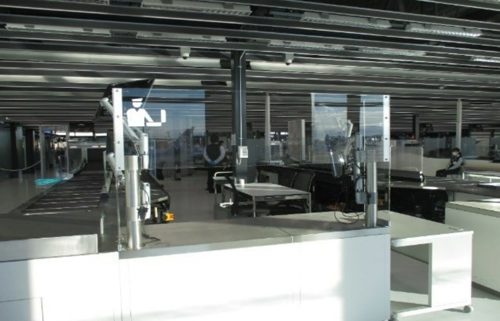Narita International Airport (NAA) is the largest airport in Japan serving the Tokyo metropolitan area1. Prior to the pandemic, NAA handled over 40 million terminal passengers a year on average (from 2015 to 2019)2.
With a forward-looking mindset that prioritizes staying ahead of the curve, NAA has worked with Smiths Detection since 2014 to raise security levels, add capabilities, and improve efficiency with a range of solutions across their terminals.
This meant that at the onset of the pandemic, NAA was well-equipped to tackle this unforeseen circumstance, working with Smiths Detection to swiftly secure their terminals to boost security and safeguard passenger health in anticipation of travel in the new norm.
By 2019, NAA and Smiths Detection have deployed extensive solutions across all three terminals. These include fully integrated digital solutions including automatic detection and smart lanes for both checkpoint and hold baggage. The solutions ease traffic, and reduce passenger wait time and number of touch points, while reinforcing the security process:
For NAA, the health and protection of passengers and staff is top priority. Being the first airport in Japan to acquire the Airport Health Accreditation (AHA) implemented by the Airports Council International (ACI), NAA will also deploy 62 Ultraviolet (UV) light tray disinfection kits and 62 Sneeze Guards across all three terminals following a successful trial in April 2021. These are designed to enable easy integration into their existing smart lane solutions to mitigate the spread of infectious diseases.
The automatic UV light disinfection kits use short-wavelength UV light (UVC) to disinfect security trays. They are proven by independent laboratory tests to eliminate up to 99.9% of microorganisms – including coronavirus — protecting passengers and staff from tactile transmission. Commonly used for disinfection in healthcare and industrial production, UVC distorts the structure of viral particles’ genetic material and prevents them from multiplying or infecting. The kits are shielded with robust metal housing to ensure that passengers and staff are not exposed to UV light.
The Sneeze Guard complements the UV disinfection kit. It acts as a physical barrier to minimise the risk of airborne transmission in areas where people congregate, such as baggage rechecks for departing passengers

Despite COVID-19 restrictions, Smiths Detection overcame obstacles to provide timely virtual consultations and installation services on the ground for NAA while ensuring safe management protocols for staff. This was particularly important during the UVC trial.
Though they met initial difficulties when installing the demo UVC unit, the teamwork between Smiths Detection’s service engineers onsite and Smiths Detection’s UK team providing remote support ensured a smooth delivery. With global support and expertise, the trial concluded successfully, demonstrating Smiths Detection’s experience and dependability.
NAA is expecting to be fully equipped with the UV light tray disinfection kits across their three terminals by March 2022.